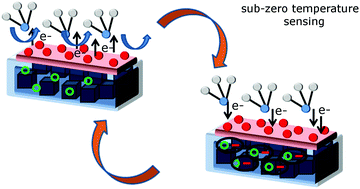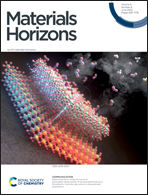Chemiresistive NH3 detection at sub-zero temperatures by polypyrrole- loaded Sn1−xSbxO2 nanocubes†
Abstract
Chemiresistive gas sensors operate mainly at high temperatures, primarily due to the need of energy for surface adsorption–desorption of analytes. As a result, the operating temperature of the chemiresistive sensors could be reduced only to room temperature. Hence, a plethora of sensing requirements at temperatures below ambient have remained outside the scope of chemiresistive materials. In this work, we have developed an antimony-doped SnO2 nanocube-supported expanded polypyrrole network that could detect low ppm ammonia gas (≤20 ppm) at sub-zero temperatures with high response (∼4), selectivity, and short response and recovery times. The low temperature chemiresistive sensing has been explained in terms of the interplay of an extended conducting network of an in situ deposited polymer, effective transport properties of majority charge carriers and a loosely bound exciton-like electron–hole pair formation and breakage mechanism.



 Please wait while we load your content...
Please wait while we load your content...